In world-first, researchers engineer human spinal cord implants for treating paralysis
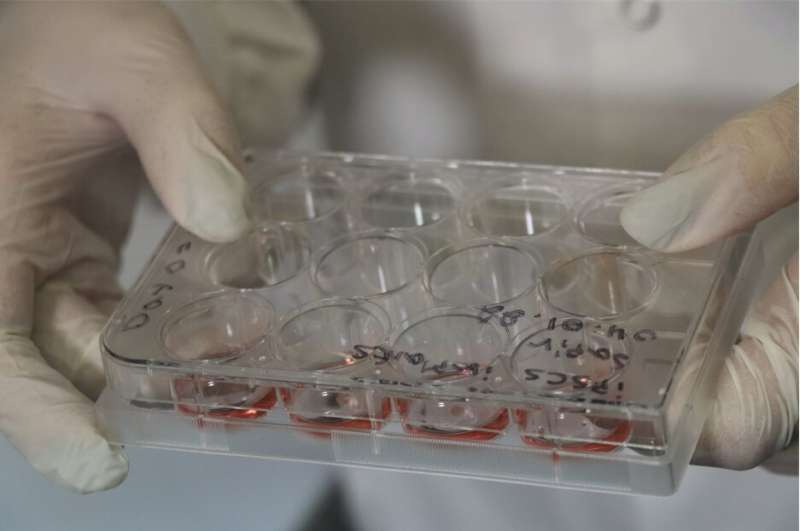
For the first time, researchers from Sagol Center for Regenerative Biotechnology at Tel Aviv University have engineered 3D human spinal cord tissues and implanted them in lab model with long-term chronic paralysis. The results were highly encouraging: an approximately 80 percent success rate in restoring walking abilities. Now, the researchers are preparing for the next stage of the study: clinical trials in human patients. They hope that within a few years, the engineered tissues will be implanted in paralyzed individuals enabling them to stand up and walk again.
The groundbreaking study was led Prof. Tal Dvir's research team at the Sagol Center for Regenerative Biotechnology, the Shmunis School of Biomedicine and Cancer Research, and the Department of Biomedical Engineering at Tel Aviv University. The results of the study were published in Advanced Science.
Prof. Dvir says, "Our technology is based on taking a small biopsy of belly fat tissue from the patient. This tissue, like all tissues in our body, consists of cells together with an extracellular matrix (comprising substances like collagens and sugars). After separating the cells from the extracellular matrix we used genetic engineering to reprogram the cells, reverting them to a state that resembles embryonic stem cells—namely cells capable of becoming any type of cell in the body. From the extracellular matrix we produced a personalized hydrogel that would evoke no immune response or rejection after implantation. We then encapsulated the stem cells in the hydrogel and in a process that mimics the embryonic development of the spinal cord we turned the cells into 3D implants of neuronal networks containing motor neurons."
-
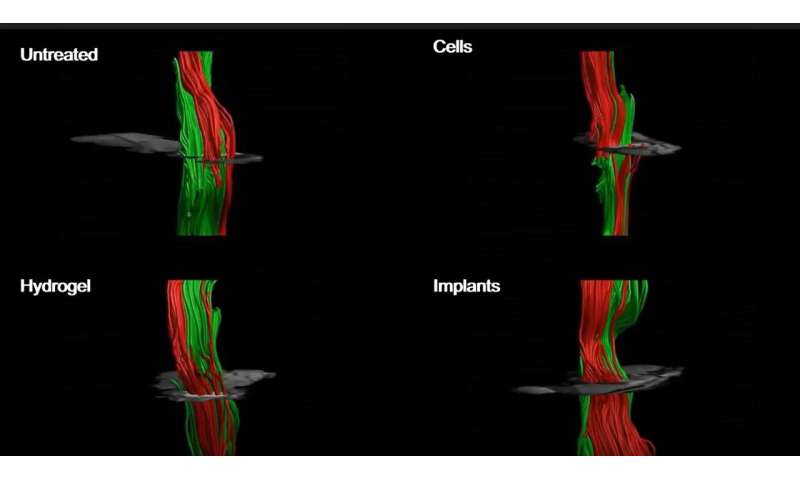
MRI of an injured spinal cord with and without treatment. Credit: Sagol Center for Regenerative Biotechnology -
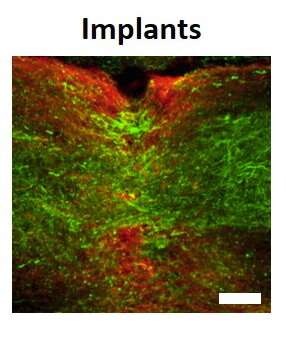
Visualization of a spinal cord with treatment. Credit: Sagol Center for Regenerative Biotechnology
The human spinal cord implants were then implanted in lab models divided into two groups: those who had only recently been paralyzed (the acute model) and those who had been paralyzed for a long time—equivalent to a year in human terms (the chronic model). Following the implantation, 100 percent of the lab models with acute paralysis and 80 percent of those with chronic paralysis regained their ability to walk.
Prof. Dvir says, "The model animals underwent a rapid rehabilitation process, at the end of which they could walk quite well. This is the first instance in the world in which implanted engineered human tissues have generated recovery in an animal model for long-term chronic paralysis—which is the most relevant model for paralysis treatments in humans. There are millions of people around the world who are paralyzed due to spinal injury, and there is still no effective treatment for their condition. Individuals injured at a very young age are destined to sit in a wheelchair for the rest of their lives, bearing all the social, financial, and health-related costs of paralysis. Our goal is to produce personalized spinal cord implants for every paralyzed person, enabling regeneration of the damaged tissue with no risk of rejection."
Based on the revolutionary organ engineering technology developed at Prof. Dvir's lab, he teamed up with industry partners to establish Matricelf (matricelf.com) in 2019. The company applies Prof. Dvir's approach in the aims of making spinal cord implant treatments commercially available for persons suffering from paralysis.
-
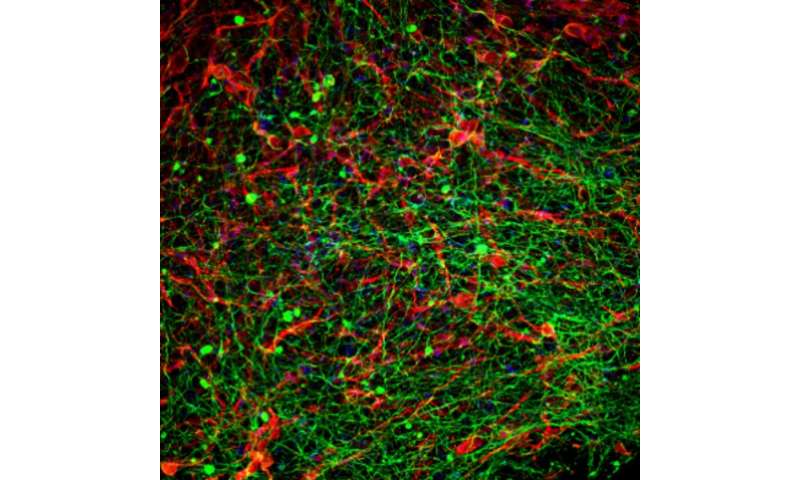
Neural net. Credit: Sagol Center for Regenerative Biotechnology -
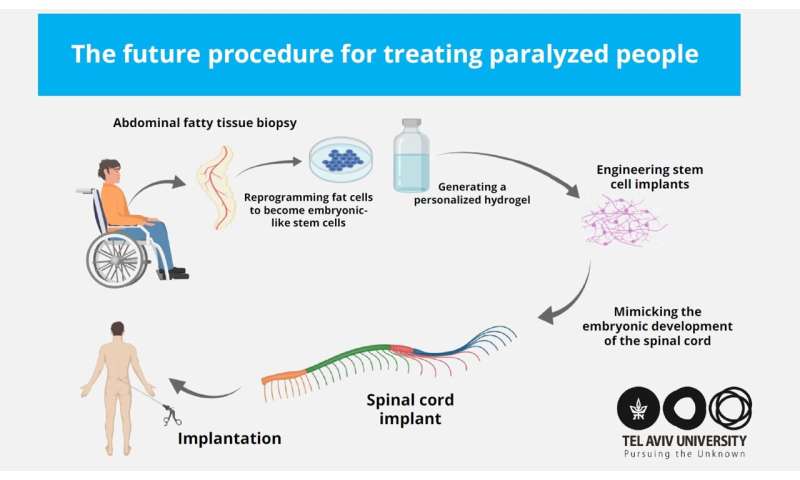
Visualization of the next stage of the research - human spinal cord implants for treating paralysis. Credit: Sagol Center for Regenerative Biotechnology
Prof. Dvir, head of Sagol Center for Regenerative Biotechnology, concludes: "We hope to reach the stage of clinical trials in humans within the next few years, and ultimately get these patients back on their feet. The company's preclinical program has already been discussed with the FDA. Since we are proposing an advanced technology in regenerative medicine, and since at present there is no alternative for paralyzed patients, we have good reason to expect relatively rapid approval of our technology."
More information: Lior Wertheim et al, Regenerating the Injured Spinal Cord at the Chronic Phase by Engineered iPSCs‐Derived 3D Neuronal Networks, Advanced Science (2022). DOI: 10.1002/advs.202105694



















